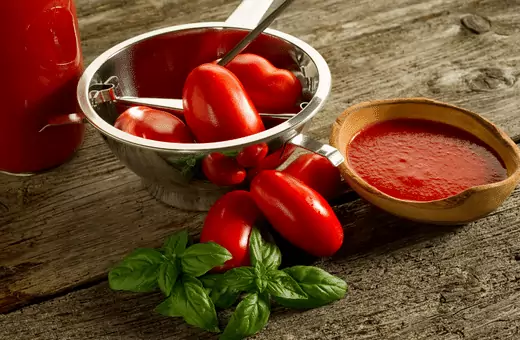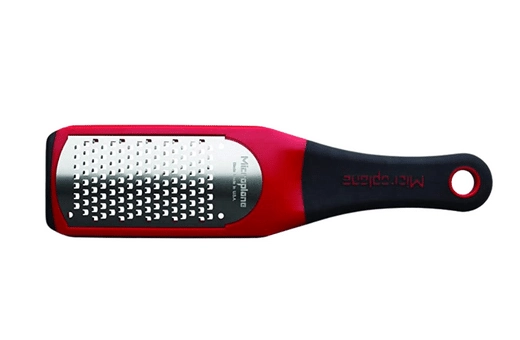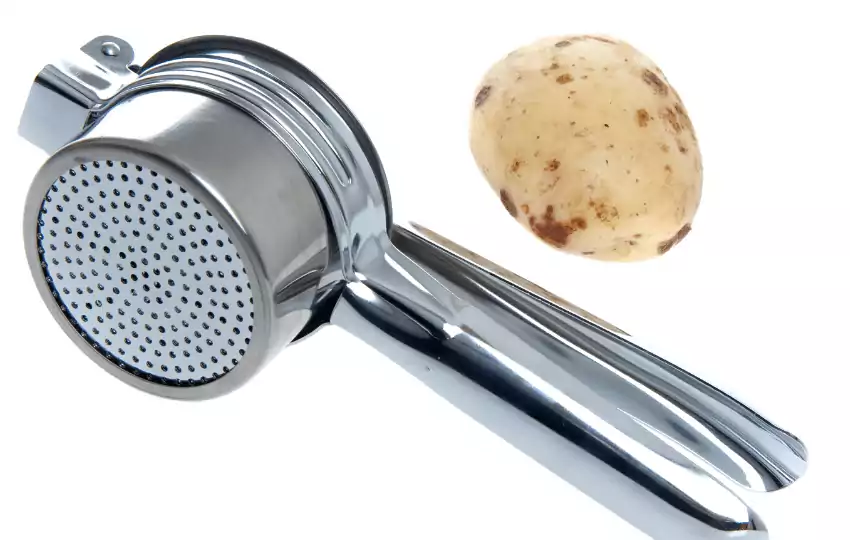Do you want to make Gnocchi or spaetzle but failed or can’t because of a potato ricer?
Then don’t worry, I have a quick solution for you either you can use my DIY idea or use your kitchen utensils to utilize, like Potato Ricer.
Yes, these Potato ricer substitutes like Masher, Sieve, Tamis, Food Mill, Large Garlic Press, etc., are way better and give the same result as a ricer. So keep going to explore the best alternative for potato ricer present your kitchen cabinet.
What is potato ricer?
A potato ricer is a kitchen tool utilized for mashed potatoes or other foods. It looks like a large garlic press and works similarly by pressing the potato through small holes in a cylinder.
This results in fluffy, light potatoes that are perfect for mashing, as well as other dishes such as gnocchi and spaetzle. Potato ricers can also be used to quickly and easily make baby food.
Potato ricers can be found in various sizes, depending on how many potatoes you need to process. The most common size is a three-quart ricer, which can typically handle up to eight pounds of potatoes.
When using a potato ricer, it is important to cook the potatoes until they are very soft. This will ensure that they will easily press through the mesh screen.
It is also helpful to cut the potatoes into smaller pieces before cooking, as this will make them even easier to process.
For best results, use a ricer with a handle that can be locked in place. This will allow you to apply even pressure to the potatoes and ensure that they are evenly mashed.
What can I use instead of a potato ricer?
You can use a Food Mill, Large Garlic Press, Grater, Masher, Sieve, Tamis, Fork, Coarse Cheese Grater, etc., instead of a potato ricer.
Ideal potato ricer substitute
1. Best substitute for potato ricer – A food mill
A food mill is a kitchen utensil utilized to grind, mash, and puree food. It can be used for a variety of recipes, such as mashed potatoes, applesauce, and tomato soup.
The food mill has a cone-shaped hopper that holds the food to be processed. The hopper is attached to a crank that turns a blade, which grinds or mashes the food. The food is then pushed through a strainer, which purees it.
There are many different brands and styles of food mills available on the market. Some are handheld, and some are electric.
Handheld food mills are less expensive and easier to use than electric ones. However, they are not as powerful and may not be able to handle large quantities of food.

Electric food mills are more expensive but are more powerful and can handle larger quantities of food.
When choosing a food mill, it is important to consider the size of the hopper, the power of the motor, and the type of strainer.
The hopper should be large enough to hold the amount of food being processed. The motor should be powerful enough to grind or mash the food. The strainer should be made of durable material that can puree the food without clogging.
Food mills are a handy kitchen tool that can make many recipes easier to prepare. They are available in various sizes and styles to suit any need. With a bit of study, it is easy to find the perfect food mill for any kitchen.
2. large garlic press– Easy Potato Ricer Alternative
The large-size garlic press is a great tool for crushing garlic, but you can use it for potato ricer.
It is made of heavy-duty stainless steel and has a comfortable grip. The large-size garlic press is dishwasher safe and comes with a lifetime warranty.
3. potato ricer substitute grater
If you don’t have a potato ricer, you can substitute it with a grater. Just be sure to use a fine grater, so your potatoes aren’t too chunky.
You could also utilize a food processor, but make sure not to overdo it, or your potatoes will become mushy.
4. Masher– Cheap Potato Ricer Replacement
If you don’t have a potato ricer, you can use a masher. Make sure to mash the potatoes until they are smooth and free of lumps. This will help ensure that your gnocchi turns out light and fluffy.
5. Use a Sieve in place of a potato ricer
Baked potato flesh can be scooped out of the skins and pressed through a sieve using the back of a spoon.
This produces a ricer-like effect. The potato flesh must be hot/warm in order to pass through the sieve easily.
To get the potato through, you don’t need to apply much pressure, but be careful because it places a massive strain on the sieve.
6. Tamis
Tamis is a very useful kitchen tool. They are perfect for puree food, straining soups, stews, sauces, and more. They are also great for chopping vegetables, fruits, and more. Tamis is dishwasher safe and easy to clean.
If you don’t have a potato ricer, you can substitute it with a tamis. It is similar to a sieve, but it has a finer mesh. This will help you to get a smoother consistency for your mashed potatoes.
7. DIY potato ricer- Fork
If you don’t have a potato ricer, no worries! You can still make fluffy, delicious mashed potatoes using a fork. It will take a little longer and require a little more arm work, but it’s definitely doable.
Here’s how to do it:
1. Start by boiling your potatoes until they are soft.
2. Once they’re cooked, drain them and add them back into the pot.
3. Use a fork to start mashing the potatoes.
4. As you mash, add in your desired amount of butter, milk, salt, and pepper to taste.
5. Keep mashing until the potatoes are the consistency you desire.
And that’s it! You’ve now got delicious, homemade mashed potatoes without any fancy equipment. Enjoy!
8. Coarse cheese grater- Best potato ricer substitute for gnocchi
If you don’t have a potato ricer on hand, never fear! A coarse cheese grater is a perfect substitute for making delicious gnocchi.
Just follow your recipe as usual, but grate your potatoes instead of ricing them. The results will be just as light and fluffy, with that signature gnocchi texture.
So next time you’re in a pinch, reach for the cheese grater instead of the potato ricer. You’ll be glad you did!

While a cheese grater will not give you the same results, it will still allow you to create a smooth mixture that will work just as well in this dish.
Simply grate your potatoes (or other vegetables) on the coarse setting and then follow the rest of the recipe as normal.
Voila – homemade gnocchi without a ricer!
Read More- Ideal Maris Piper Potatoes Alternatives
Potato ricer hacks
If you’re looking for some great potato ricer hacks, then look no further! Here’re five of our favorite ways to use this kitchen tool:
1. Make perfect mashed potatoes: A potato ricer is a key to making ultra-smooth mashed potatoes. Just add your cooked potatoes to the ricer and give them a good squeeze.
The results will be much creamier and lump-free than if you mashed them by hand or with a masher.
2. Create light and fluffy gnocchi: Traditionally, gnocchi is made by pressing boiled potatoes through a ricer. This hack is the perfect way to achieve ultra-light and fluffy gnocchi that are absolutely delicious.
3. Make homemade baby food: If you’re looking for a healthy and affordable alternative to store-bought baby food, then potato ricer is your new best friend.
Just cook up some soft vegetables or fruits, add them to the ricer, and give them a squeeze. You’ll have fresh and nutritious baby food in no time!
4. Use it as a pasta maker: That’s right, a potato ricer can also be used to make homemade pasta. Just add some cooked dough to the ricer and give it a squeeze. You’ll have long, thin noodles that are perfect for any pasta dish.
5. Make DIY spaetzle: Spaetzle is a traditional German noodle dish that’s usually made by hand. But if you don’t have the time or patience for that, then a potato ricer is the perfect shortcut.
Just add cooked dough to the ricer and give it a squeeze. You’ll have perfectly cooked spaetzle in no time.
We hope you enjoy these potato ricer hacks!
Potato ricer vS masher for gnocchi
If you’re looking for the perfect way to make gnocchi, you may be wondering if a potato ricer or masher is the best option. Both have advantages and disadvantages, so picking the right tool for the job is necessary.
A potato ricer is a kitchen device that resembles a large garlic press. It’s designed to quickly and easily mash potatoes, making it a great option for gnocchi.
The main advantage of using a ricer is that it produces a light, fluffy texture that is perfect for this dish.
However, potato ricers can be challenging to use and clean, so they may not be the best choice for everyone. If you’re not confident in your ricer skills, or if you don’t want to deal with the extra cleanup, a masher may be a better option.
Mashing potatoes by hand is definitely more work than using a ricer, but it’s also more forgiving.
If your potatoes are a little too dry or too wet, you can easily adjust the amount of liquid you add to get a perfect consistency. And, if you’re not worried about achieving a light and fluffy texture, a masher is definitely the way to go.
So, which is the best option for making gnocchi? It really depends on your personal preferences. If you want perfectly mashed potatoes with minimal effort, a ricer is your best bet.
But if you’re looking for an easy-to-use gadget that doesn’t require any extra cleanup, a masher is the way to go.
Best potato ricer
[amazon bestseller=”best potato ricer” “items”=”5”]
What is the point of a potato ricer?
The point of a potato ricer is to make it easier to create smooth, consistent rice-size potatoes or mashed potatoes.
It is also useful for other foods such as squash, sweet potatoes, carrots, and pumpkin. Ricers come in many different sizes and designs, but they all work in essentially the same way.
When potatoes are boiled, they can become waterlogged and difficult to mash by hand. A ricer breaks them down into smaller pieces that are much easier to work with. This results in a dish that is light and fluffy rather than lumpy and heavy.
How can I rice potatoes without a ricer?
There are a few different ways that you can rice potatoes without a ricer.
One way is to simply grate the potatoes using a cheese grater. Another method is to operate a food processor or blender to puree the potatoes.
Finally, you could also try mashing the potatoes by hand using a potato masher or even just a fork.
Whichever method you prefer, make sure to cook the potatoes before you attempt to rice them so that they’re soft enough to easily be mashed or pureed.
Is it worth buying a potato ricer?
There’re a number of things to consider when deciding whether or not to purchase a potato ricer. The most important factor is probably how often you plan on using it.
If you only anticipate needing it for the occasional mashed potato dish, then it might not be worth the investment.
However, if you make mashed potatoes frequently or plan on using it for other recipes like gnocchi or hash browns, then a ricer can be a great addition to your kitchen tools.
Ricers also tend to be very inexpensive, so they are definitely worth considering if you think you will get used to them.
Why is a ricer better for mashed potatoes?
There are several reasons why a ricer is better for making mashed potatoes.
First, a ricer will produce a much smoother and more consistent texture than if you were to use a traditional potato masher. This is because the ricer breaks down the potatoes into smaller pieces, which results in a smoother mash.
Additionally, a ricer allows you to add other ingredients to your mashed potatoes more easily than if you were using a masher. For example, you can easily add butter, cream, or cheese without having to worry about lumpy potatoes.
Finally, ricers are simply easier to use and clean than mashers. Overall, a ricer is the better option for making mashed potatoes.
Read More- Best substitutes for Nut Milk Bag
How do you make mashed potatoes without a ricer?
There are a few ways to make mashed potatoes without a ricer.
One way is to simply boil the potatoes until they are soft, then mash them with a potato masher or fork.
Another way is to bake the potatoes in the oven until they are soft, then mash them.
Finally, you can also cook the potatoes in a slow cooker or pressure cooker until they are soft, then mash them.
Whichever method you choose, ensure to add plenty of butter, milk, and salt to the potatoes for the best flavor.
Can you use a potato ricer as a juicer?
Operating a potato ricer as a juicer is possible, but it may not be the best option. Potato ricers typically do not have as much power as a dedicated juicer and do not extract juice that much.
Even they can be difficult to clean. If you decide to operate a potato ricer as a juicer, make sure to clean it thoroughly afterward to avoid any cross-contamination.
How do you clean a potato ricer?
To clean a potato ricer, first, remove any food particles from the surface of the device.
Then, rinse the ricer under warm water, using a soft sponge or brush to scrub away any remaining dirt or debris.
Finally, dry the ricer thoroughly with a clean towel before storing it away.
Can you use a potato ricer with skins on?
A potato ricer can be used with or without skins.
If you choose to use the potato ricer with skins, then you will need to wash the potatoes thoroughly before using them.
Otherwise, the skins could clog up the ricer and make it difficult to use.
When using a potato ricer with skins, you may also need to cut the potatoes into smaller parts so that they suit better into the ricer.
Conclusion- what to use if you don’t have a potato ricer
A potato ricer is a fantastic tool to have in your kitchen if you want to make light and fluffy mashed potatoes. If you don’t have a potato ricer, you can use a food mill, an electric mixer, or a fork to mash your potatoes.
Just be sure to boil the potatoes until they are very soft before mashing them. Otherwise, you’ll end up with lumpy potatoes.
If you don’t have a potato ricer, you can use a food mill, masher, or even a fork to get the desired results. It will just require a very little elbow grease!

